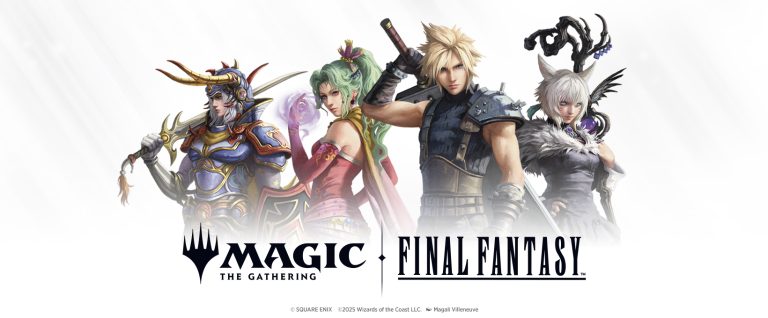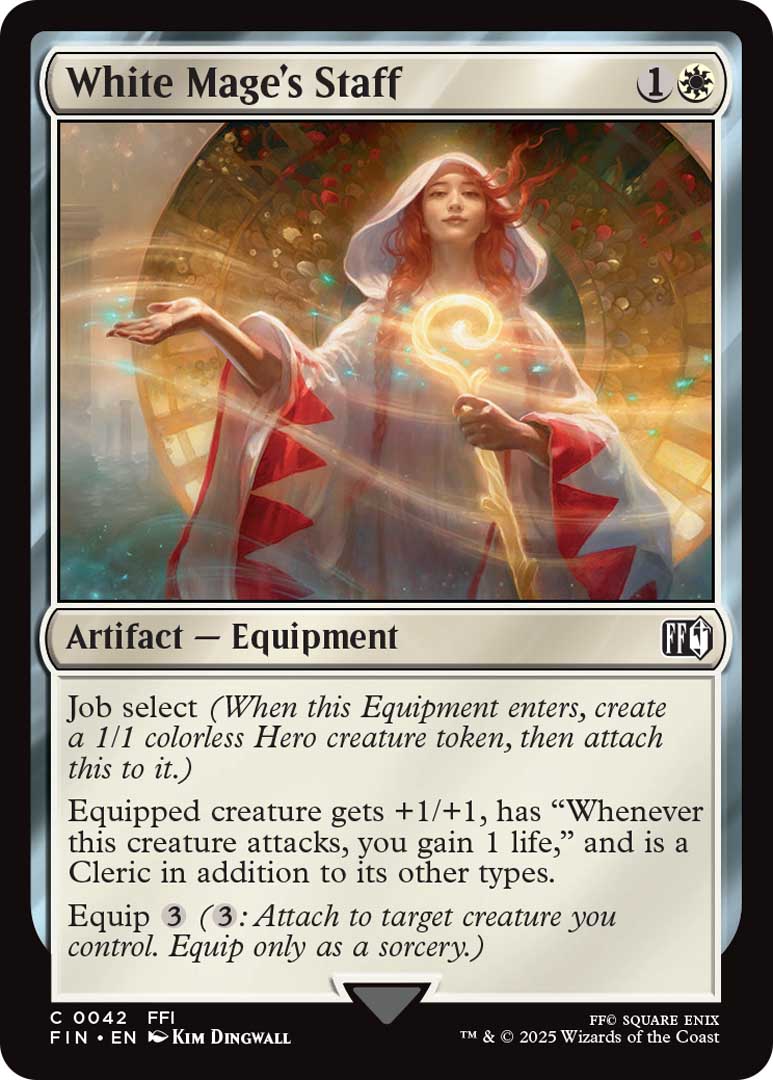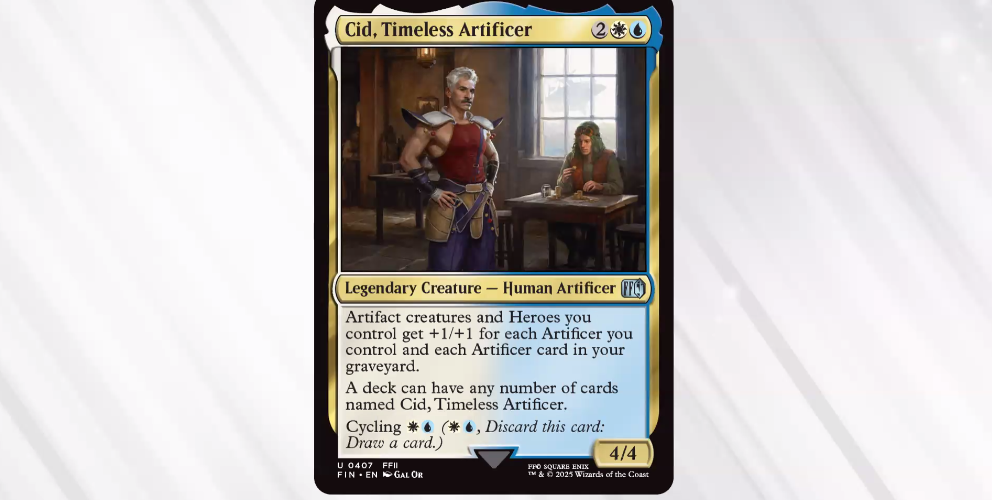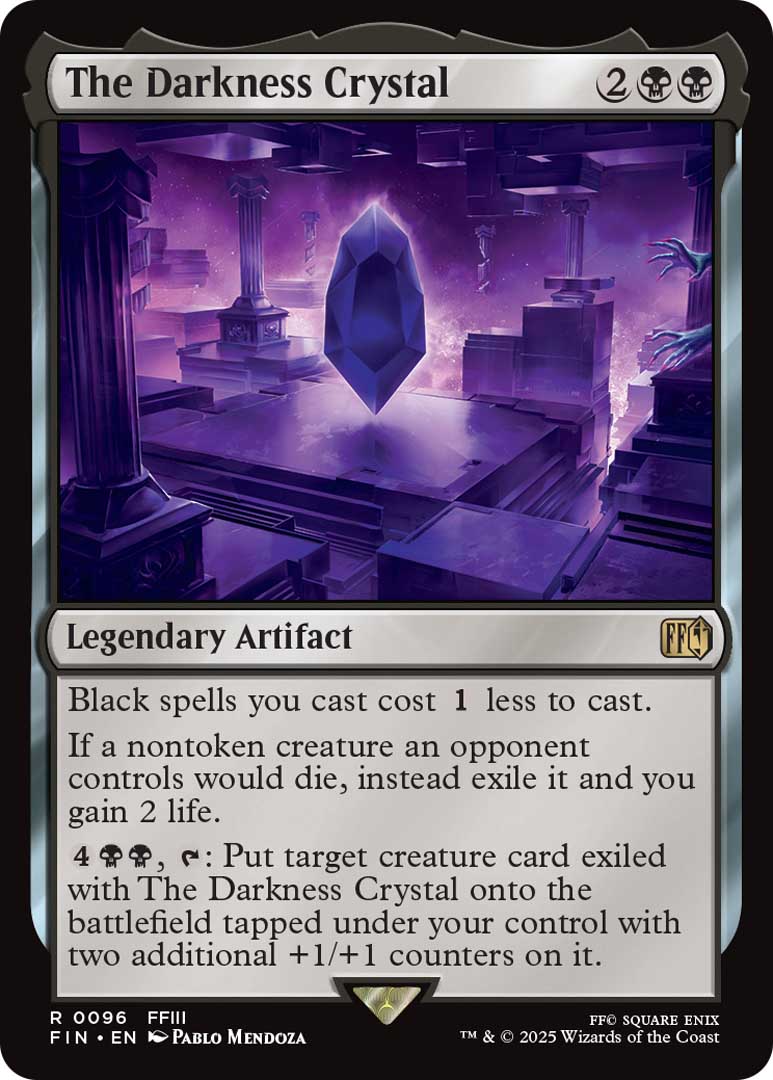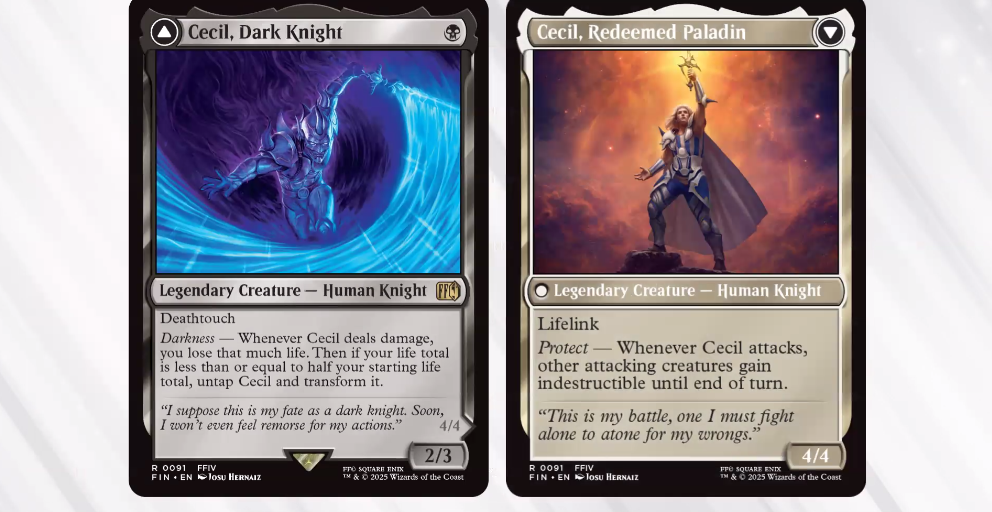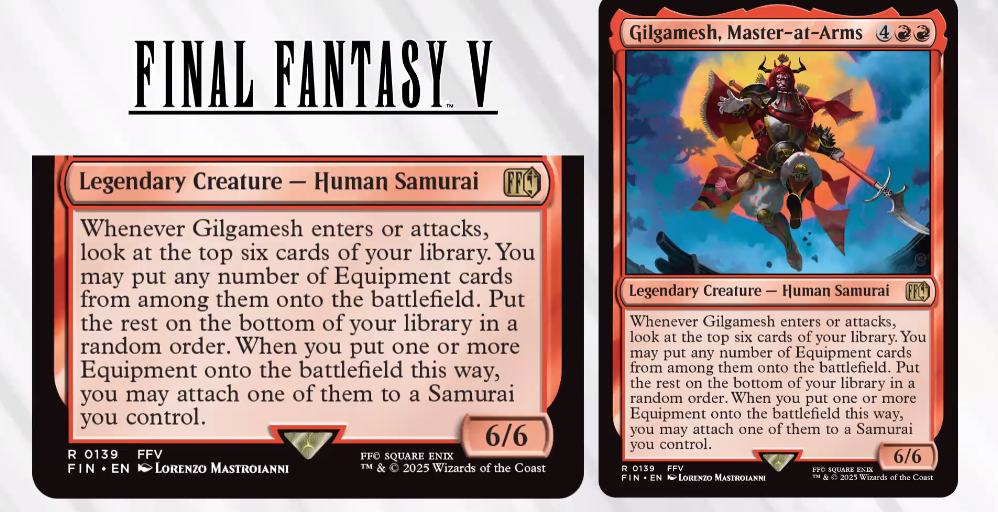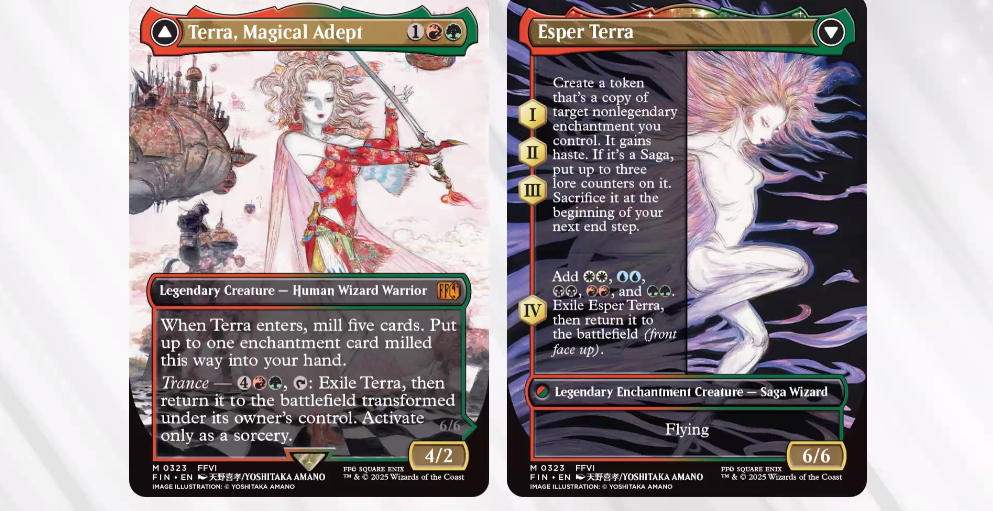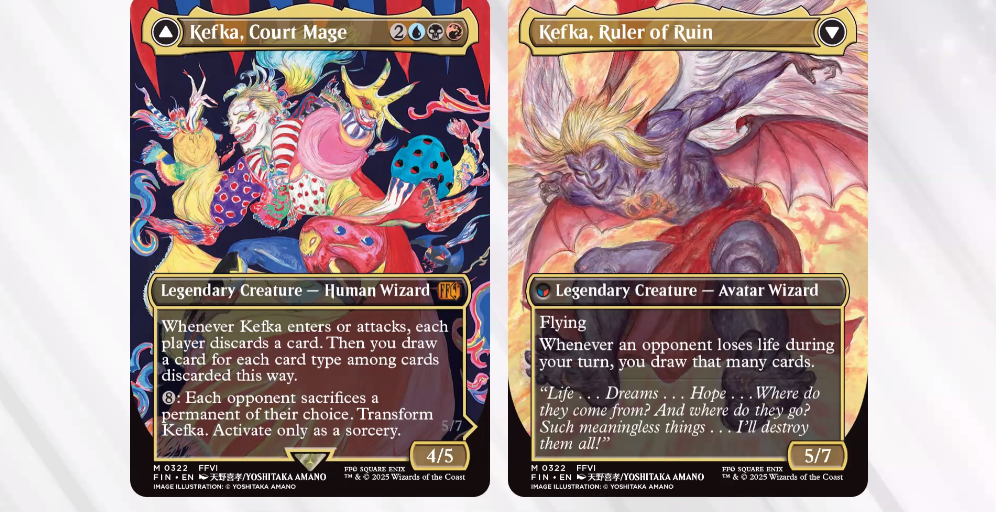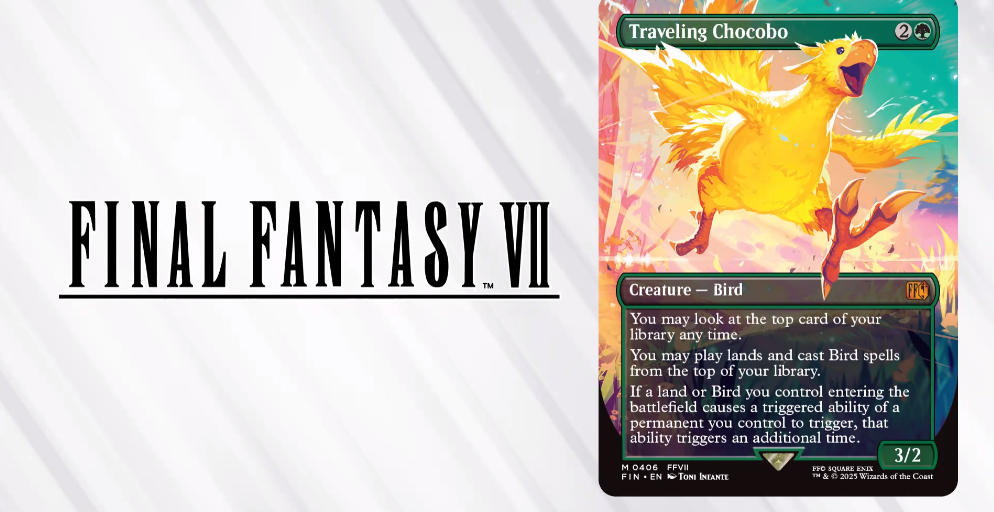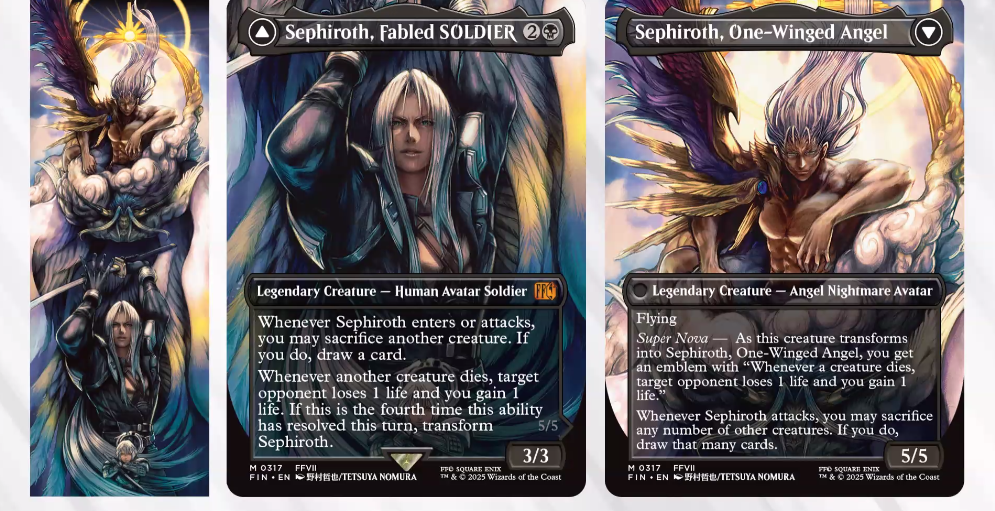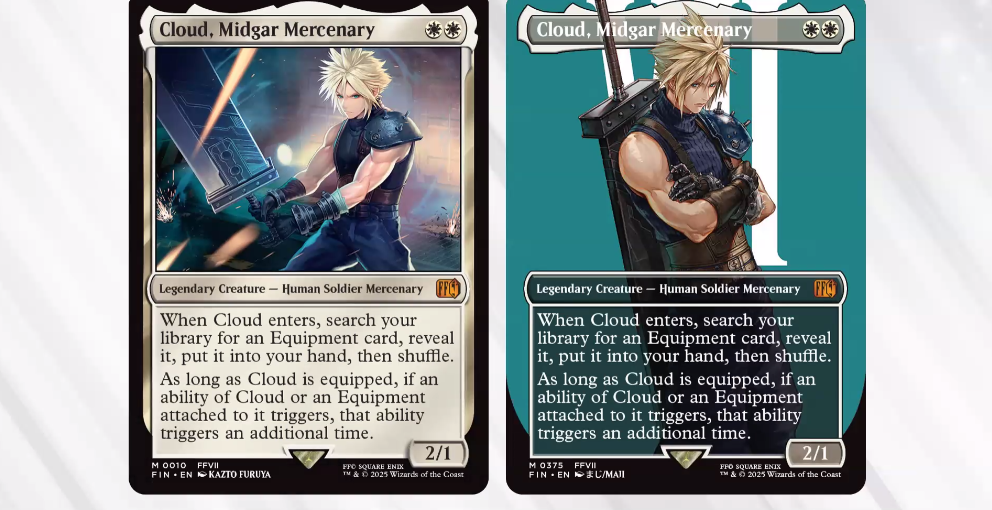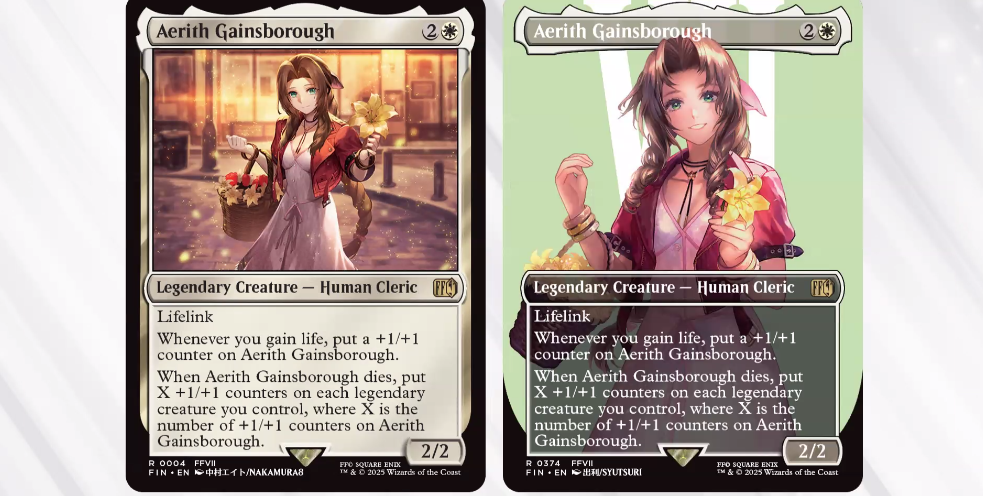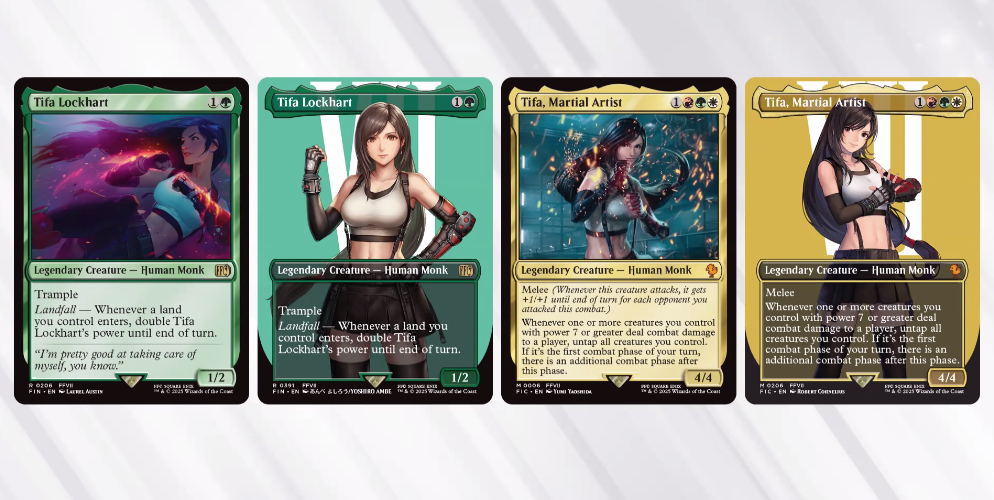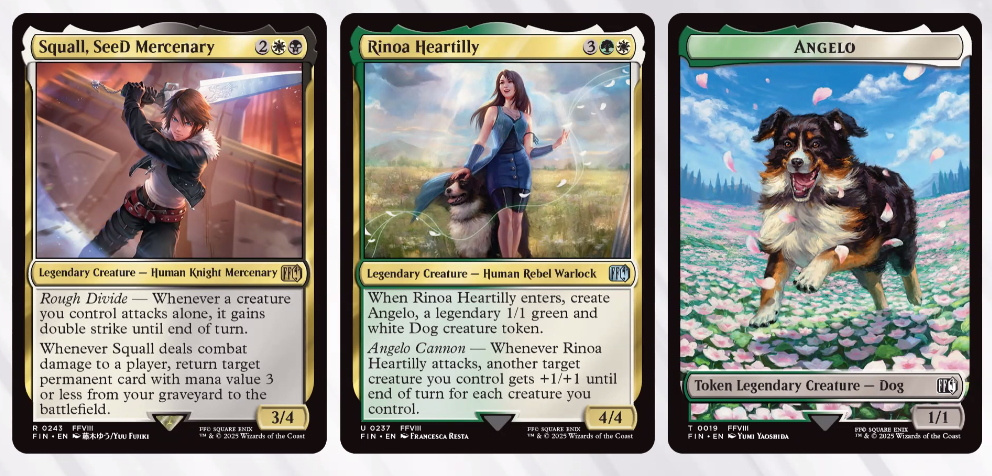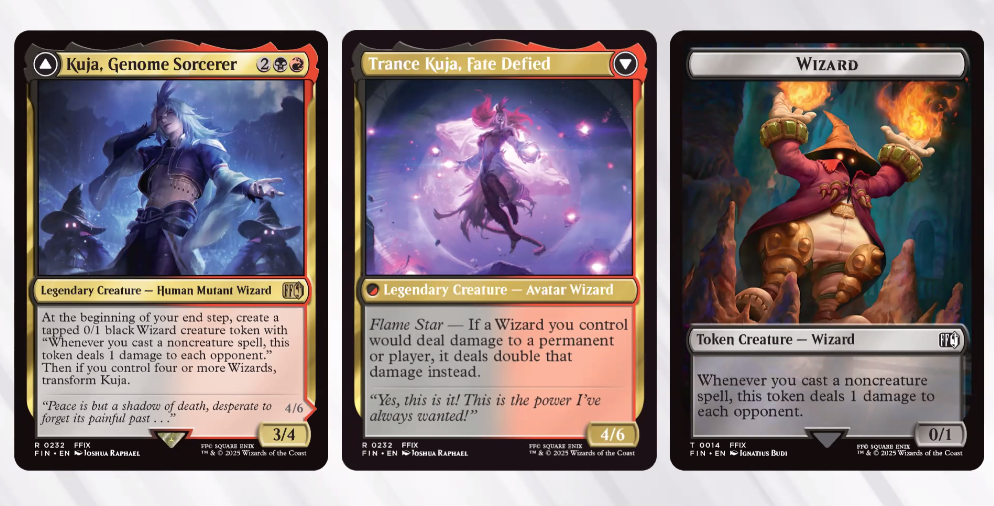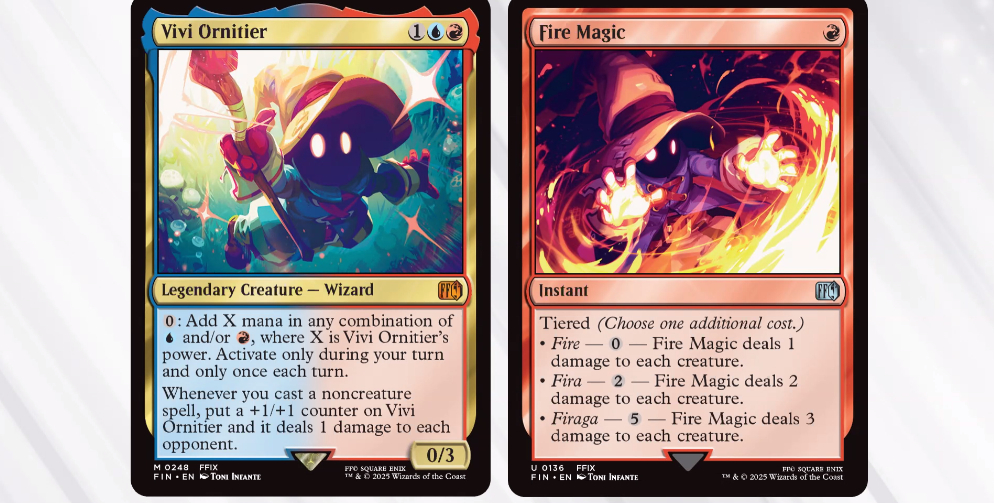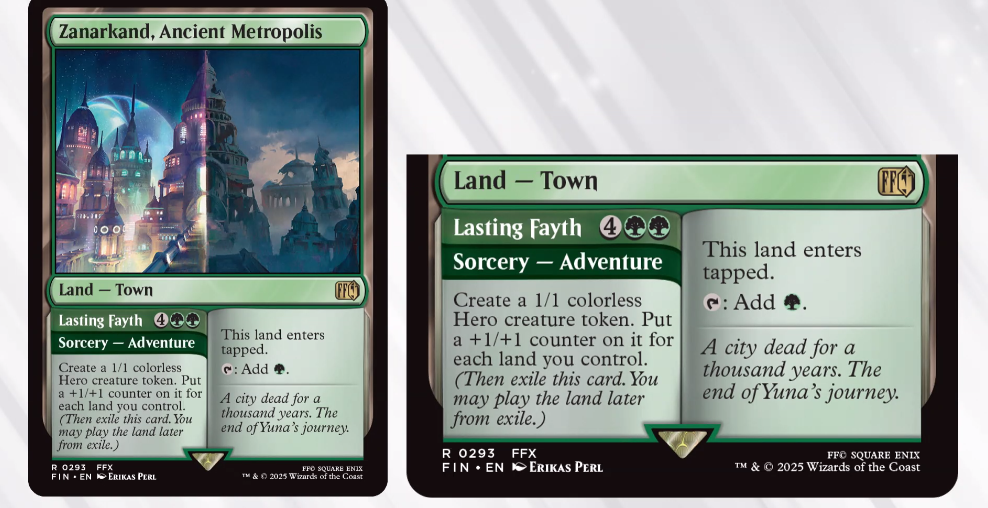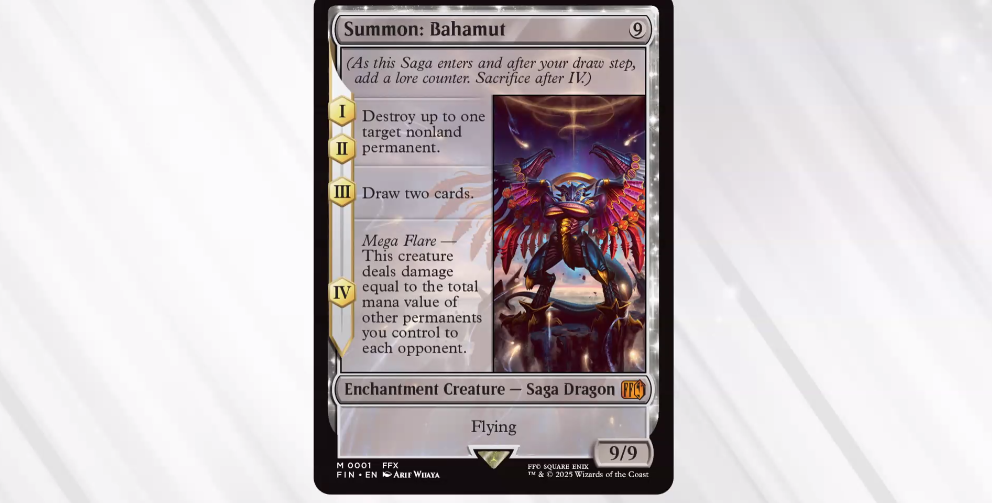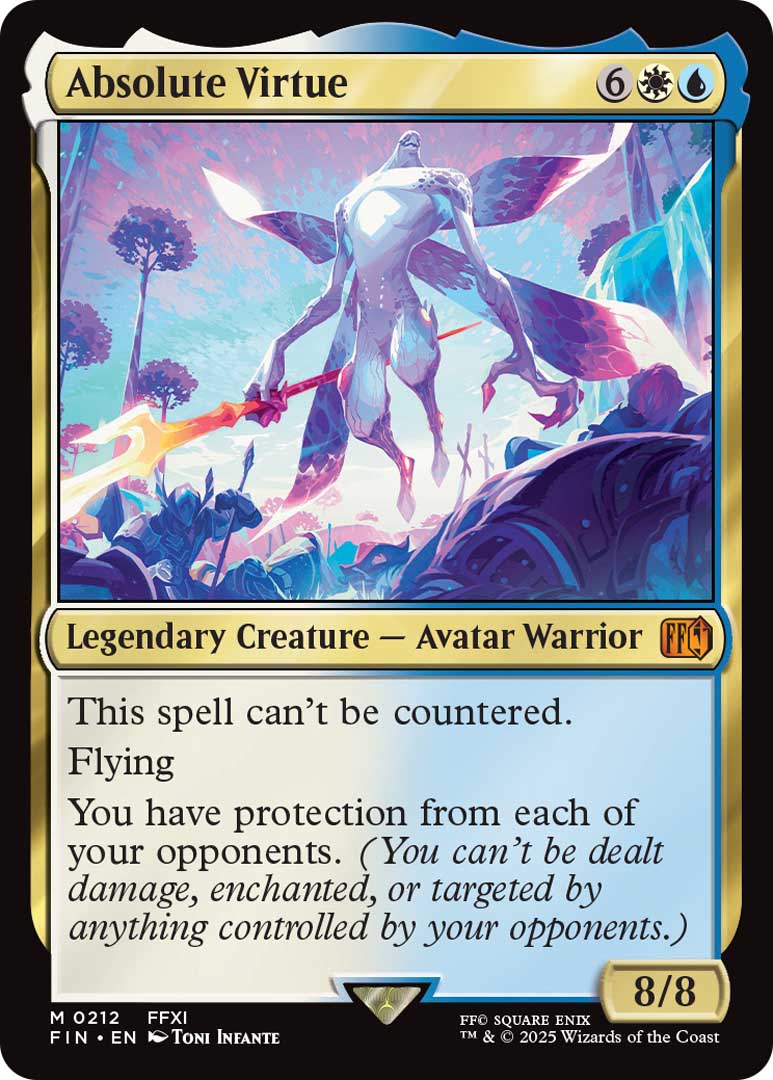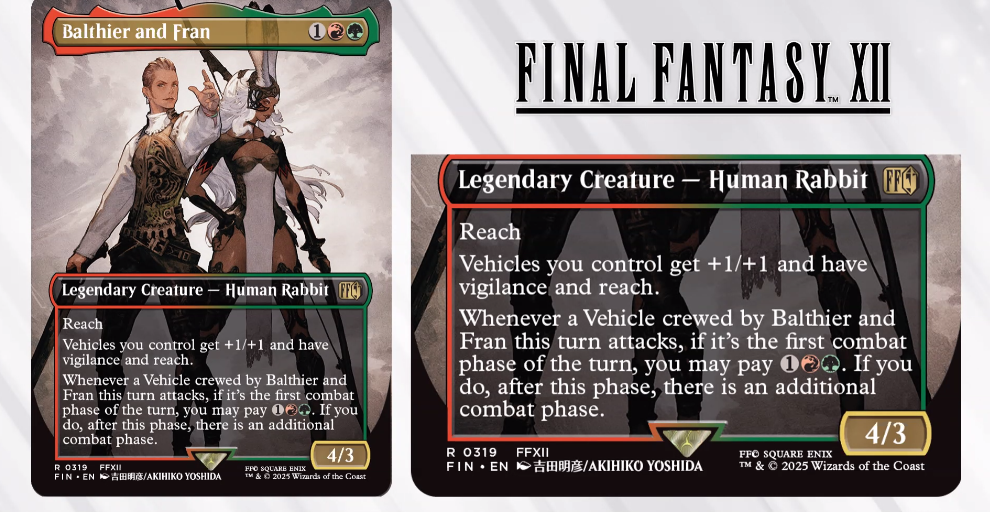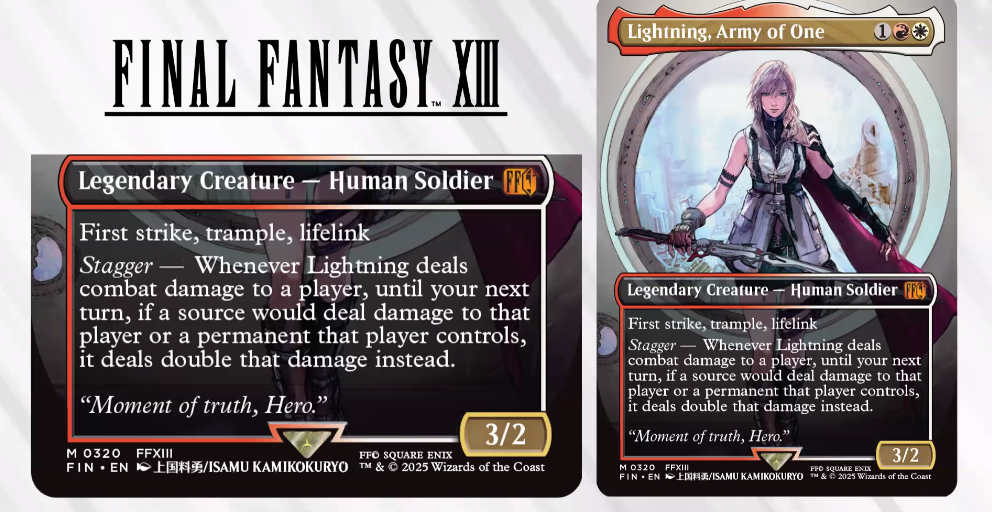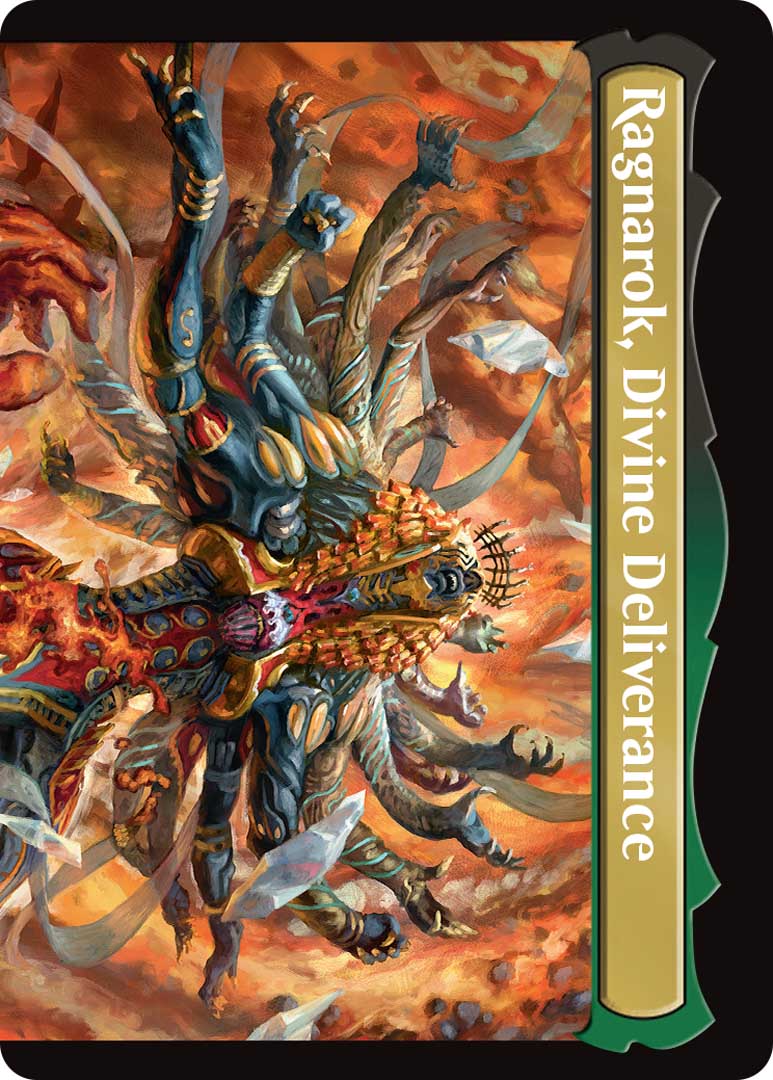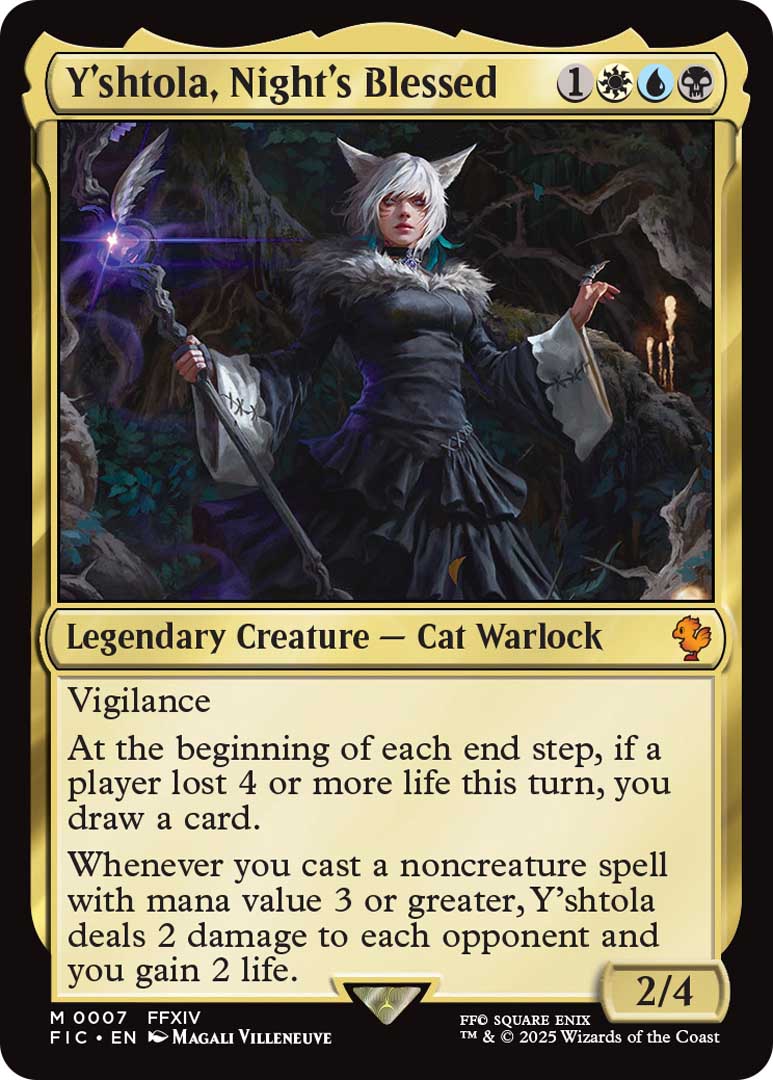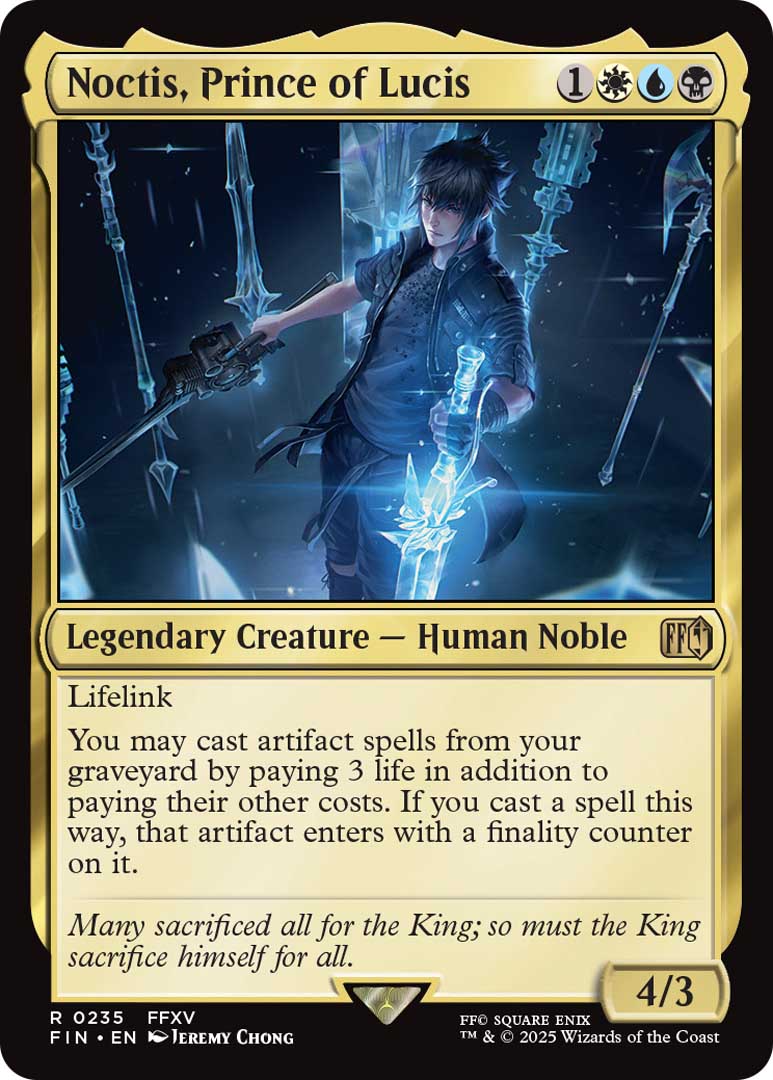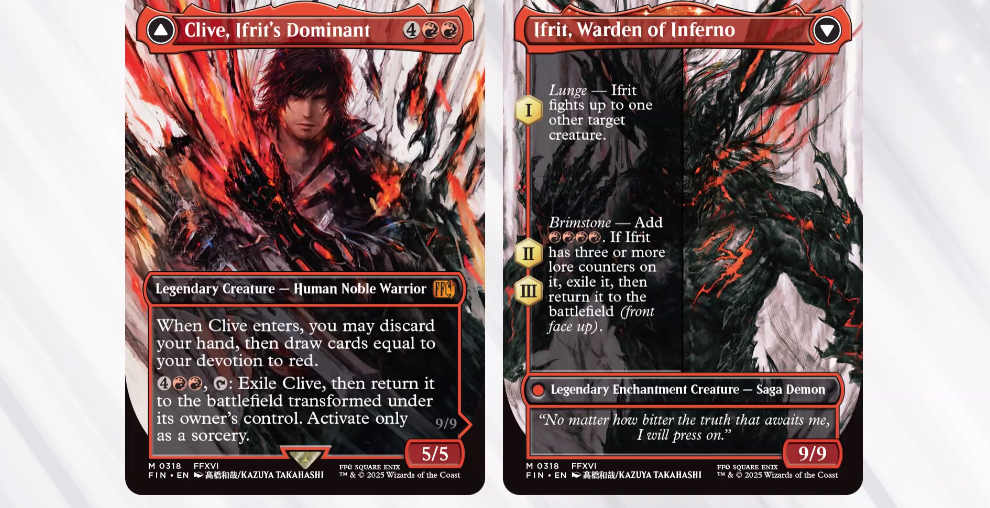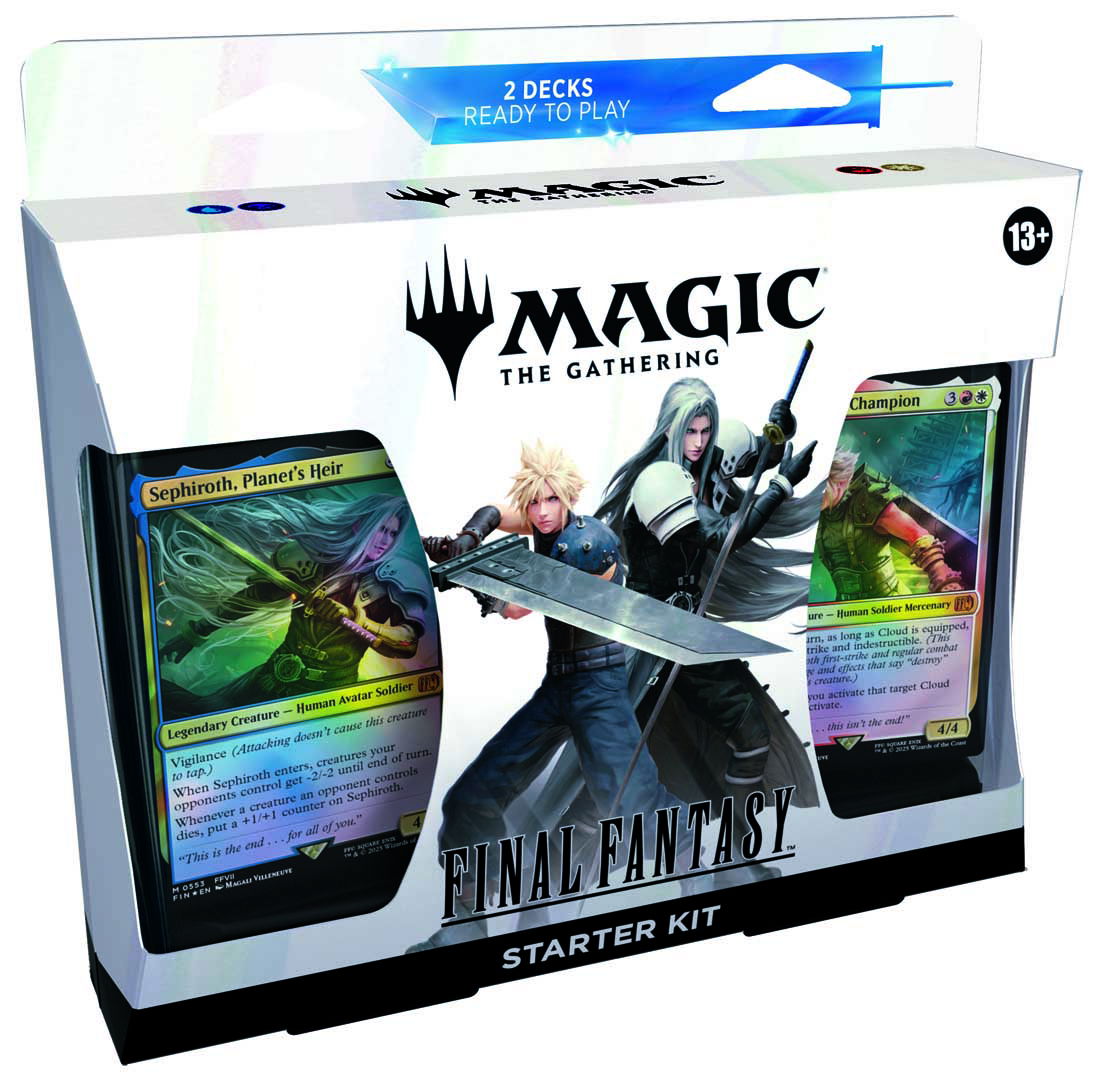Magic The Gathering is collaborating with Final Fantasy, and the card set is only a month and a bit away. To show off the collaboration, Magic The Gathering designers hosted a panel at PAX East. We got an early look at what they planned to show off. They shared the story of how this collaboration came to be and the process it took to get to the finish line. We heard about the story from four specific individuals who worked on the cards.
- Gavin Verhey, Principal Designer & Set Design Lead for FINAL FANTASY
- Zakeel Gordon, Executive Producer
- Daniel Holt, Senior Game Designer
- Dillon Deveney, Principal Game Designer
The Beginning
Even though this set was revealed in February of this year, this collaboration has been worked on far longer. The designers were working on this collaboration between the two companies for five years. That is right, this collaboration was in the works even before Final Fantasy XVI was released. The idea for each game in the series being created into a card was the thought process of “What nine things are important out of this Final Fantasy Title or Character that fans will need to see?” That became the mindset that each of these cards was made.
Final Fantasy I
The very first Final Fantasy set the groundwork for the series as a whole. The job system, the four crystals, the four warriors of light, and the battle system were all introduced in this game. Granted, every single thing got innovated and enhanced after the first game, but this is what did a lot of the legwork in how Final Fantasy was perceived in the NES and SNES era of the series. These cards in the set are focused on the job select system. We also have the classes themselves shown off in the entirety of the set thanks to the number of Black Mages, Warriors, Red Mages, etc in the entirety of the series.
Final Fantasy II
Releasing in 1988, Final Fantasy II has proven to be a bit of a black sheep. The game tried a “unique” leveling system in which classes level up skills and spells by using them over and over. Despite being a bit of a chore gameplay-wise, Final Fantasy II still has cards represented in the upcoming Magic the Gathering set.
Final Fantasy III
Final Fantasy III revolves around a story of four young orphans searching for crystals. Crystals are pretty important in most Final Fantasy games, but especially here. As such, Magic the Gathering will feature at least five unique crystal cards.
Final Fantasy IV
Final Fantasy IV is when the series really started to rely more on narrative. As such, it’s Principal Game Designer Dillon Deveney’s favorite in the series. Characters go through so much transformation in their respective titles, especially in this entry. As such, we can see cards like Cecil, Dark Knight. It starts out dealing damage to yourself and your opponent, but then becomes a Paladin which gives you life.
Final Fantasy V
Deveney notes that the team went to the creators of Final Fantasy at Square Enix and asked, “What is it you most love about what you created? What is it you want the fans to remember?” Certain iconic moments and characters stood out, such as those that appear in multiple games. Gilgamesh appears in a number of Final Fantasy games, but gets a treatment courtesy of Final Fantasy V. The card is intended to play well with Samurai decks as well as those in the Final Fantasy line.
Final Fantasy VI
Final Fantasy VI is one of the most beloved games in the series, and the first to have its own Commander Deck. Commander Decks are 100 card products. Each card is based on a character or event from the specific game of the given deck. The team notes that Final Fantasy VI was a given for a Commander Deck, as it has such a large cast. “No Final Fantasy game is complete without the Summons,” shares Daniel Holt. As such, Terra can transform into a Summon. Meanwhile, Kefka transforms and makes players sacrifice a permanent on the field.
Final Fantasy VII
Final Fantasy VII is another beloved entry in the series, and arguably the most iconic. As such, the set features another hallmark of the series: Chocobos! There are a variety of colors for this card, with the rare Gold Chocobo serialized as just one of 77. As the famous villain of Final Fantasy VII, Sephiroth features art by Tetsuya Nomura, the longtime designer for Final Fantasy.
Deveney notes that the designers had to include Aerith and how she “is all about unrelenting hope in dark times.” As such, her card features Lifelink and grants tokens to other creatures when she dies. And since they showed off Aerith, they have to show off Tifa. Tifa has a number of variants in both cards and art.
Final Fantasy VIII
Final Fantasy VIII is the favorite Final Fantasy game of both Magic event producer Richard Hagon and Final Fantasy XVI voice actor Ben Starr. Squall and Rinoa feature prominently, and Rinoa’s ability even lets you play a token for Angelo the dog.
Final Fantasy IX
Final Fantasy IX is often considered one of the more underrated entries in the series, as it returned Final Fantasy to its high fantasy roots. Gavin Verhey notes that Vivi is a great card to use at the beginning of a game since he gets a +1/+1 token for every non-creature spell you play.
Final Fantasy X
Final Fantasy X is another fan favorite game and naturally has its own Commander Deck, the third one for the series. Daniel Holt notes that since Commander Decks get to go all in, this one portrays some of the smaller, more intimate moments in the game. It also features one of the bigger aspects of the series, figuratively and literally: Bahamut.
Final Fantasy X has a huge focus on the pilgrimage, special land cards represent the pilgrimage with Adventure Land cards.
Final Fantasy XI
As the first Final Fantasy MMO, Final Fantasy XI posed a unique challenge for the Magic the Gathering Designers. Deveney notes that its cards will focus more on the bosses in the game.
Final Fantasy XII
Final Fantasy XII returns to a single-player experience. The game is also more plot-focused. The game features several vehicles, so these cards work well with Vehicle cards. An example of this is Balthier and Fran, who naturally go together as one card and can crew Vehicles, which offers a few bonuses
Final Fantasy XIII
Final Fantasy XIII is unique in that it not only received one, but two sequels. The flagship card of this game is Lightning, Army of One. Lightning as a card utilizes the stagger mechanic. In Final Fantasy XIII staggering an enemy lets you dish out much more damage after you break their stagger bar. Lightning can use Stagger on enemy players, which is especially terrifying since the card has Trample and Lifelink.
Final Fantasy XIII also introduced the one meld card in the entire set. Vanille and Fang have a huge part in the story, with them being able to transform into Ragnarok. So designers wanted to give them the Meld card together to help illustrate Ragnarok’s impact on Final Fantasy XIII

Final Fantasy XIV
Final Fantasy XIV arrives on the scene as the second MMO and the fourth and final game to offer a Commander Deck. Daniel Holt wasn’t an active player, so he got into it and spent roughly 200 hours playing to understand the game. This deck brings back the Job Select mechanic.
Final Fantasy XV
Final Fantasy XV is all about camaraderie and adventure. Noctis is the first creature to have mechanics centered around equipping equipment from the graveyard.
Final Fantasy XVI
Final Fantasy XVI, the latest numbered entry in the series that isn’t a remake, is all about epic scenes and battles. The game features Dominants, people who can transform into Summons and back. As such, the cards reflect that change.
Conclusion
The team notes that for Final Fantasy fans who don’t know how to play Magic the Gathering, the starter kit is a great (and inexpensive) place to start. For those wanting a bit more, Commander Decks retail at $69.99 with each telling the story of a specific game. And for those who like collectible, Collector Commander Decks are double the price but have every card in foil.
The pre-release for the Final Fantasy line will go from June 6th to June 12th. The set will then fully release on June 13th. Preorders are now live right here.
And yes, every Cid has a card.


